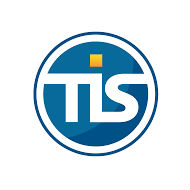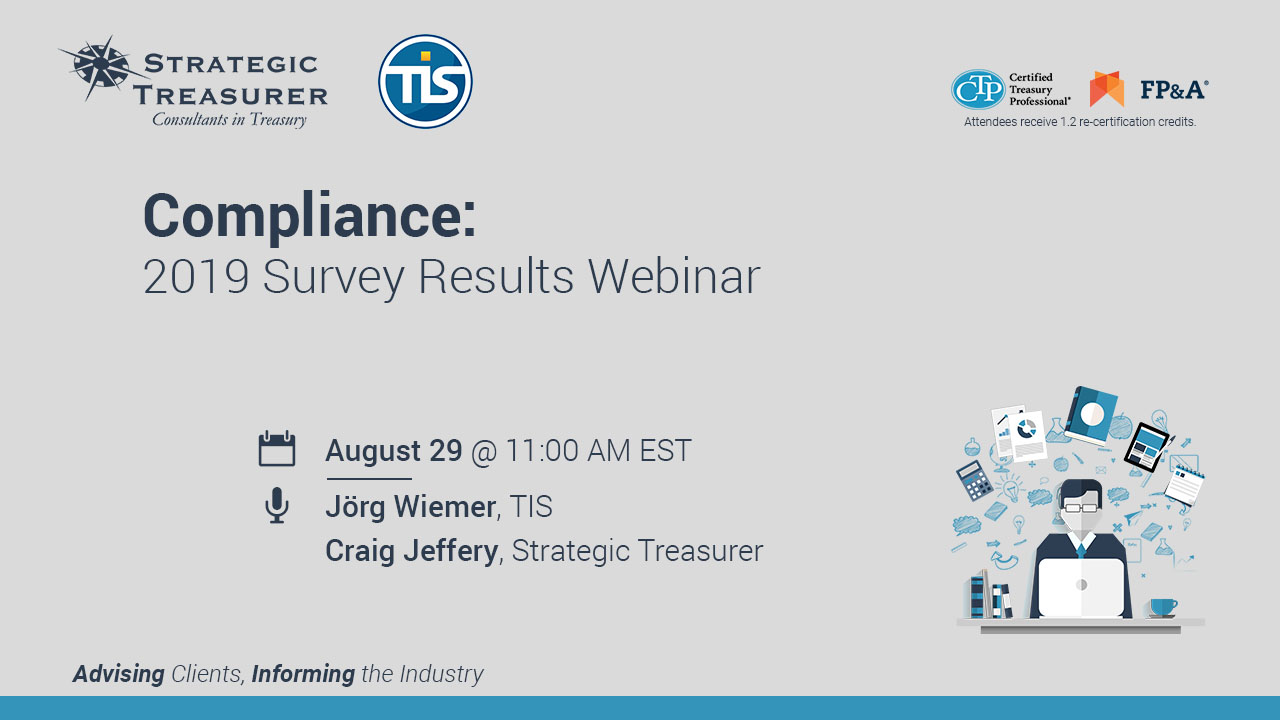| 12-08-2019 | Carlo de Meijer | treasuryXL

There is a broad consensus amongst the post-trade industry that blockchain technology will revolutionise the securities post-trade world and could radically change how assets are maintained and stored by custodians and central securities depositories (CSDs).
Blockchain technology may enable real-time settlement finality in the securities world. This could mean the end of a number of players in the post-trade area, such as central counterparty clearing houses (CCPs), custodians and others. For a long time, also central securities depositories (CSDs), as intermediators in the post-trade processing chain, thought they also could become obsolete.
This idea however is changing. While CSDs are making up their mind on their future position in the blockchain world, they are increasingly considering blockchain as enabler of more efficient processing of existing and new services, instead of a threat to their existence. But what will be their future role?
Complex/fragmented post-trade infrastructure
As we all now, the current post-trade infrastructure is highly complex and fragmented. Much of this complexity and fragmentation is the result of the various intermediaries needed in the post-trade process. They include players like banks, brokers, stock exchanges, central counterparty clearing houses (CCPs), central securities depositories (CSDs), real-time gross settlement (RTGS) systems and custodian banks.
In the current set-up of the post-trade environment, important record-keeping functions, such as those relating to the issuance, settlement, registration and safekeeping of securities, are performed centrally by different specialist intermediaries. Intermediaries also perform the post-trade servicing of assets, such as crediting dividend payments or bonus issues to client accounts, or managing rights issues and takeovers.
They are thereby dealing with siloed outdated legacy systems and technologies each having their own ledger that are not good communicating with each other. Consequently, they spend much time and resources on reconciliation and risk management. As a result settlement currently takes two or more days in many places, involving high risks and high costs for transacting parties.
The present role of CSDs
Situated at the end of the post-trading process, CSDs are systemically important intermediaries. They thereby form a critical part of the securities market’s post-trade infrastructure, as they are where changes of securities ownership are ultimately registered.
CSDs play a special role both as a depository, involving the legal safekeeping and maintenance of securities in a ‘central depository’ on behalf of custodians (both in materialised or dematerialised form); as well as for the issuer, involving the issuance of further securities by issuers, and their onboarding onto CSDs’ platforms.
CSDs are also keeping a number of other important functions, including: dividend, interest, and principal processing; corporate actions including proxy voting; payment to transfer agents, and issuers involved in these processes; securities lending and borrowing; and, provide pledging of share and securities.
Blockchain: disruption in securities post-trade
Prospects
DLT offers the prospect of rationalising and combining post-trade activities in one single action, offering safer and cheaper record-keeping, as well as more seamless securities issuance. They thereby may create significant cost savings and efficiency gains across the securities market’s post-trade infrastructure.
- Blockchain is linking trading partners directly. That means everything will be in place in the ledger at the time of the transaction.
- With DLT, all of the complex systems and processes to transfer cash and equities from one account to another are not required. Everything can be embedded into the blockchain.
- Institutions will no longer have to maintain their own databases, as with DLT there will be only one database for all participants in the transaction (so no more fragmented islands of information).
- This will heavily ease the reconciliation process, allowing increasing transparency and efficiency in a presently highly fragmented industry.
- It could permit the direct or real-time settlement of transactions between accounts, the simultaneous verification of transactions and the registration of ownership, and the direct and automated payment of entitlements to accounts.
- As a result, buyers and sellers can match transactions in seconds and all parties are aware a transaction has been done.
Disruption
On the other hand, DLT has the potential to heavily disrupt existing post-trade processes in financial services. Shared ledgers of ownership promise to revolutionise the post-trade infrastructure, Thereby impacting the business model of a number of intermediaries.
Use of a blockchain network would automate the process further, with completely integrated authentication and transparency of the transfers themselves. As a result, clearing and settlement can be transformed into a single process, in which digital and digitised assets are delivered against payments instantly, thereby removing the need for a market infrastructure provider to hold a security, or token in its own physical or electronic vault.
The extent to which blockchain will disrupt existing processes in financial services is still unsure. Some say a complete disintermediation of middle and back office processes is under way, removing most (or even all) intermediaries from the post-trade processes.
Others however say the impact of this emerging technology will be less forceful, with a (limited) number of existing intermediaries to play an important though somewhat different role.
CSDs changing attitude
What is sure is that for some actors in the securities post-trade world, DLT will completely replace their businesses or even make the work of some intermediaries such as CCPs and custodians redundant. Others will still be needed, but they should question what will be their added-value within future DLT services, such as CSDs.
CSDs are changing their viewpoint on DLT including blockchain. Instead of seeing blockchain as a threat to their existence, they are now also considering them as (potential) enabler of more efficient processing of existing and new services.
“CSDs could have an important role to play in a blockchain-based settlement system. As ‘custodians of the code, CSDs could exercise oversight of, and take responsibility for, the operation of the relevant blockchain protocol and any associated smart contracts.” Euroclear Report
CSDs are believed they will continue to perform an important role as trusted, centralised financial market infrastructures (FMIs), providing gatekeeping services and oversight of the relevant blockchain.
How are CSDs reacting?
Recognising the threat as well as the opportunities of blockchain to their current services, a group of CSDs across the world has been working together and with regulators to define their future role in the blockchain post-trade environment. By working together they will ensure that CSDs from each region are represented, potentially unleashing (unimagined) network effects.
Aim of this cooperation is to explore how blockchain could be used for post-trade processes, identify, define and develop use cases in the securities depositories’ industry (including smart contracts and digital assets), and identify how existing standards could support it.
Another group of 30 central securities depositories (CSDs) in Europe and Asia are researching possible ways to “join hands” in developing a new infrastructure to custody digital assets. The CSDs will attempt to figure out how to apply their experience in guarding stock certificates to security solutions for crypto assets.
“A new world of tokenized assets and blockchain is coming. It will probably disrupt our role as CSDs. The whole group decided we will be focusing on tokenized assets, not just blockchain but on real digital assets.”
These CSDs clearly see an opportunity to apply their knowledge and skills to the crypto currency space, where “losing your private keys means losing your coins forever”. The group’s focus is looking at how to protect these keys for crypto investors, and how the tokenization of “everything stands to change everything”. The next phase of the research will also involve some large custodian banks.
CSDs future role in a blockchain environment
There are various reasons why CSDs may continue to play a role in the post-trade bklockchain environment. That is not that strange as the primary functions of CSD may run parallel to many of those that emerge from the blockchain technology. CSDs are aware that some of those roles will neatly fit into their natural infrastructure. But there will also be some activities that will become obsolete.
Looking at the roles that could be suited for CSDs, those would be anything around safety, notary and governance.
1. Notary function
Blockchain may enable tokenisation of assets and the use of smart contracts. All these are new components in the value chain. This may mean that a digital actor will be needed to manage this tokenisation, and creation and maintenance of smart contracts, overseeing the entire securities token ecosystem. CSDs could fulfil this notary function.
1a. Asset tokenization
Asset tokenization is the representation of assets on the blockchain in the form of tokens, which are designed to be unique, liquid secure, instantly transferable, and digitally scarce – and therefore impossible to counterfeit.
In a world where securities and other assets become tokenised, some have argued that an intermediary will still be needed to issue them and create rules. Tokenised assets exchanged on a distribute ledger may still require CSDs to hold the equities, which the token represent. They would thereby fulfil the crucial notary function, both as tokenising agent and as operator of the escrow accounts in which the real assets are hold.
1b. Custody of private keys
There may also be a need for secure maintenance of personal encrypted keys. Adopting blockchain technology would allow individuals and companies to have complete control over their assets and data, accessed through a set of private keys that must be kept secure.
Emerging technologies like decentralized key recovery will allow more and more individuals to secure custody of their own assets, thereby removing the artificial and expensive separation between legal and beneficial ownership in most asset markets.
Some will choose to take that responsibility themselves, but many investors may choose to outsource the custody of their private keys and token wallets to the companies and CSDs that can provide an independent and secure safekeeping service for these private keys.
2. Record of title for securities
CSDs could also be of value to record of title for securities. In many cases, the law mandates how title to property transfers. EU regulations state that for “any financial instrument to be transferable and tradable”(i.e. takes place on a trading venue, exchange or multilateral trading facility), securities must be recorded (registered) in book entry form in a CSD.
Under the current law, to enable having a blockchain-based system of transfer of title to securities, the blockchain would need to be the system that the CSD operates, which is not truly distributed.
Or one would need to create a new legal regime that recognizes that the transfer of title on a blockchain is effectively a transfer of title to the relevant property, and allows that in the context of securities trading. But that would take a lot of time to realise.
As a solution, the blockchain technology can be implemented through a hybrid model in which the CSD can either operate a blockchain platform itself to perform the book entry role. Or it can continue to perform this role off-chain, with the third- party blockchain platform accessing those records held by the CSD via an API (application programme interface).
3. Governance
CSDs could also play the governance role in a DLT based system – to ensure that what happens within their systems is unchallengeable. The movement from a post-trade system based around the existing infrastructure to a DLT-based system, without updating the regulatory and legal regime, could introduce a new systemic risk into the financial system. Regulators and legislators are unlikely to be comfortable in allowing the wholesale replacement of the existing infrastructure with DLT-based solutions.
CSDs are best placed to retain a ‘policing’ or governance role in a blockchain framework. This role should be the management of an insolvency of a party, particularly if there is a position that is not settled and the relevant contract is not yet completed. The involvement of CSDs in a governance and operational role could help increase trust of investors, and raise the quality of the blockchain ecosystem infrastructure underpinning these new asset classes.
4. Trusted gatekeeper: Authorisation and administration
CSDs could also be of help as trusted gatekeeper to DLT networks. While regulators will set the standards for admission to the network, the admission tests are likely to be administered by other parties. The most likely candidate for that role of trusted gatekeeper to DLT networks are the CSDs.
They are already the “first home of financial assets issued, and guardians of the integrity of every issue they accept”.
“The regulators are unlikely to want to immerse themselves in the operational details of the authorisation process.” “They will sub-contract that work to a trusted intermediary (read CSD).”
5. Other roles
A. DLT proxy voting system
One role in the post-trade environment that is already intensively investigated by CSDs is the management of a DLT-based e-proxy voting system. This would include providing general meeting services and give shareholders an easy, user-friendly and secure tool for voting remotely.
There is potential for improvement for instance in respect to the depots of voting rights. The system would automatically allow (or disallow) voting privileges for members based on what voting rights they had within a particular organization.
By using open source blockchain technology the efficiency and integrity of the Annual General Meetings and shareholder voting processes can be increased. Given that it is an end-to-end solution – from the time a meeting is announced and all the way through the voting process to the publishing of results – it means that all stakeholders will truly benefit within the process.
“By leveraging blockchain, we are able to reduce friction in the voting and proxy assignment process and also ensure that all information is transparent to stakeholders when required and with the proper security, governance and risk procedures in place.”
B. Elective corporate actions
CSDs could also have a role to play at elective corporate actions. Corporate actions recorded by the ledger may include paying out dividends, splits, issue of rights, warrants, pay-ups etc.
The user group for a permissioned blockchain network can choose who should validate these actions. They could simply give validation rights to every node. Getting issuers to publish elective corporate actions, such as rights issues and proxy votes, directly onto a blockchain, however might be a difficult step to realise.
Alternatively, this could be the role of a trusted third party, or a combination of both a trusted party and the nodes. This would imply a logical role for CSDs, creating a common registry of ownership associated with an ID.
C. Reconciliation
CSDs could also be of help in the reconciliation process. Blockchain may certainly help automate other components of the settlement process, such as reconciliation. A DLT-based reconciliation tool, with multiple trading firms participating in a record-based system, however could still occur within the CSD, which may act as the single point of reference for reconciling the various records.
D. Cross-border collateral mobilization
A final area where CSDs could play a role is in cross-border collateral mobilisation. Leveraging blockchain technology could overcome existing hurdles when moving collateral across various jurisdictions, making the transfer faster and more efficient.
“Designed to simplify cross-border collateralisation away from using multiple complex and non-standardised links towards smooth movement across various jurisdictions.”
By using CSDs it could enable a centralised, faster and more efficient allocation of fragmented security positions to cover financial obligations of market participants in multiple jurisdictions.
Concluding remarks
CSDs are likely to play an integral role but important role in any blockchain environment. Their role however will look quite different from we know them today. They can be the logical center of the system, custodying the standards, processes and governance of the system.
CSDs will have the opportunity to be agents of change. CSDs however need to adapt to meet new demands asking for delivering added value services in the new blockchain environment.
But they are not there yet! There is clearly a gap between the long-term opportunities presented by blockchain and the challenges involved in making progress.
Several blockchain initiatives in this area have failed, or are just ended their pilot stage or are very limited in scope. CSDs are also not currently building a single solution. Rather, each group is building its own platform designed to interoperate with the others.
There is thus urgent need to leverage existing business standards for the distributed ledger technology application in order to realise a global infrastructure that can smoothly operate cross border.

Carlo de Meijer
Economist and researcher


















